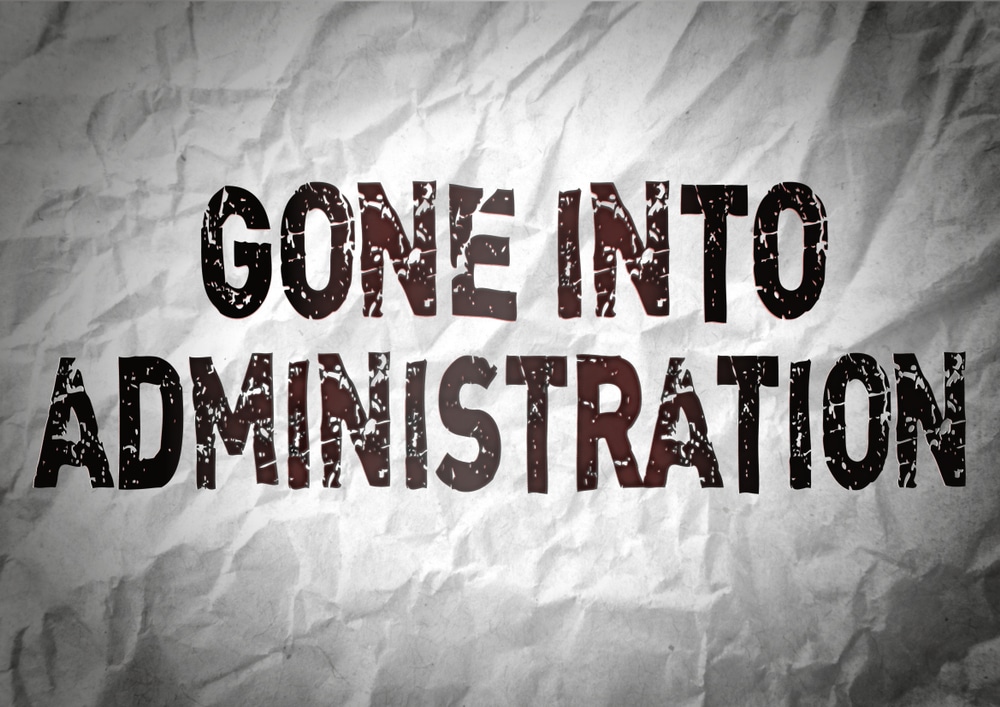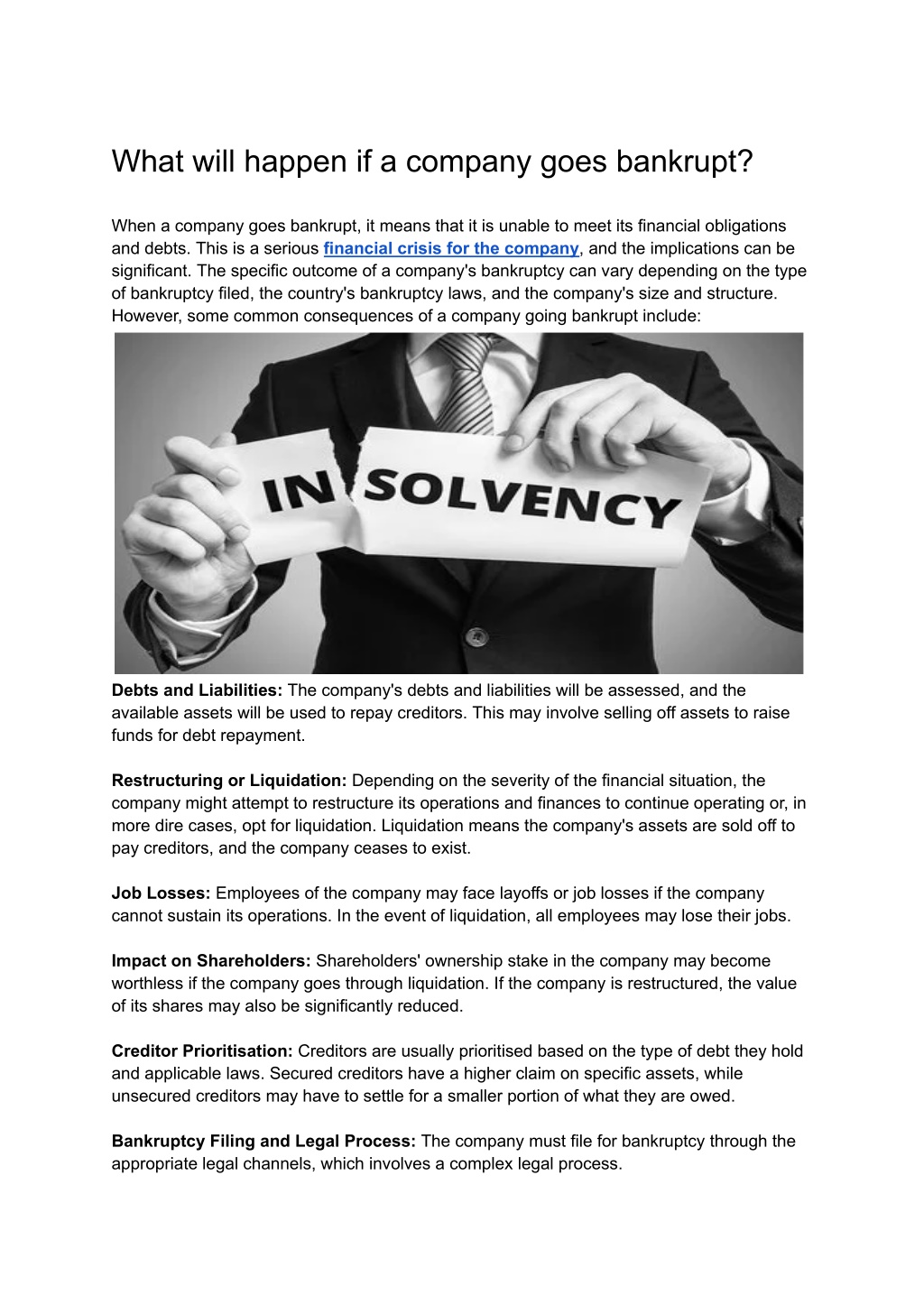Recognizing Company Administration: What Happens When a Company Goes into Administration in the UK?
Recognizing Company Administration: What Happens When a Company Goes into Administration in the UK?
Blog Article
The Process and Consequences of a Firm Coming In Administration
As a business faces economic distress, the decision to go into administration marks an essential time that can have far-ranging effects for all involved events. The process of getting in administration is detailed, including a collection of steps that intend to navigate the business towards prospective recuperation or, in some cases, liquidation.
Overview of Firm Administration Process
In the world of corporate restructuring, a crucial initial step is gaining a thorough understanding of the intricate business management process. Business management refers to the formal insolvency treatment that intends to rescue an economically troubled company or accomplish a much better outcome for the company's creditors than would be feasible in a liquidation scenario. This process includes the visit of a manager, that takes control of the firm from its directors to evaluate the monetary circumstance and establish the ideal course of action.
During administration, the business is approved defense from lawful action by its lenders, supplying a halt duration to create a restructuring strategy. The manager collaborates with the company's management, creditors, and other stakeholders to develop a strategy that may include offering business as a going worry, getting to a business voluntary plan (CVA) with lenders, or eventually putting the company into liquidation if rescue efforts confirm useless. The key objective of business administration is to make best use of the go back to financial institutions while either returning the company to solvency or closing it down in an organized fashion.

Duties and Duties of Administrator
Playing a pivotal duty in looking after the business's decision-making procedures and monetary events, the administrator presumes considerable responsibilities throughout the corporate restructuring procedure. The key task of the administrator is to act in the ideal rate of interests of the company's creditors, intending to achieve one of the most favorable end result possible - company administration uk. This involves conducting a detailed evaluation of the firm's financial scenario, developing a restructuring plan, and applying techniques to make the most of go back to financial institutions
Furthermore, the manager is in charge of liaising with numerous stakeholders, consisting of employees, vendors, and governing bodies, to ensure transparency and conformity throughout the management process. They should additionally connect efficiently with shareholders, giving regular updates on the business's development and seeking their input when essential.
Moreover, the administrator plays a vital role in handling the daily procedures of the organization, making key decisions to maintain continuity and preserve value. This includes assessing the feasibility of various restructuring choices, discussing with financial institutions, and inevitably guiding the company towards a successful leave from management.
Effect On Company Stakeholders
Presuming an important setting in managing the business's monetary affairs and decision-making processes, the manager's activities during the corporate restructuring process have a direct influence on various firm stakeholders. Investors may experience a decline in the worth of their investments as the firm's monetary problems are resolved. Financial institutions, consisting of loan providers and suppliers, might encounter uncertainties regarding the repayment of financial debts owed to them. Staff members typically experience job instabilities because of prospective layoffs or changes in job conditions as component of the restructuring efforts. Customers might experience interruptions in services or item availability during the management process, influencing their depend on and loyalty in the direction of the company. In addition, the neighborhood where the company operates can be affected by potential work losses or changes in the firm's operations, affecting local economies. Efficient interaction from the administrator to stakeholders is crucial in handling assumptions, reducing issues, and fostering transparency throughout the administration procedure.
Legal Ramifications and Responsibilities
Throughout the procedure of business administration, careful consideration of the lawful effects and commitments is extremely important to make sure compliance and secure the passions of all stakeholders entailed. When a firm goes into administration, it triggers a collection of legal requirements that have to be adhered to.
Additionally, lawful ramifications occur worrying the treatment of employees. The manager should follow employment legislations concerning redundancies, staff member legal rights, click and obligations to give required details to employee agents. Failing to conform with these legal demands can cause legal activity against the firm or its administrators.
In addition, the business getting in administration might have contractual commitments with various celebrations, including vendors, consumers, and property managers. These contracts require to be assessed to identify the very best training course of activity, whether to terminate, renegotiate, or meet them. Failing to handle these contractual commitments suitably can lead to conflicts and prospective lawful consequences. Basically, understanding and fulfilling legal responsibilities are vital facets of browsing a business via the management procedure.
Approaches for Business Recovery or Liquidation
In taking into consideration the future instructions of a business in management, critical planning for either recovery or liquidation is important to chart a sensible course forward. When going for business recuperation, crucial methods may consist of carrying out a comprehensive evaluation of the company operations to recognize ineffectiveness, renegotiating leases or agreements to improve capital, and carrying out cost-cutting steps to boost earnings. Additionally, looking for brand-new investment or funding options, expanding blog earnings streams, and concentrating on core competencies can all add to an effective recovery strategy.

Final Thought
In conclusion, the procedure of a company going into administration entails the appointment of a manager, who handles the responsibilities of managing the firm's events. This process can have substantial repercussions for numerous stakeholders, including investors, creditors, and workers. It is very important for companies to very carefully consider their alternatives and techniques for either recuperating from monetary troubles or proceeding with liquidation in order to reduce possible lawful implications and obligations.
Business management refers to the official bankruptcy treatment that aims to rescue an economically troubled firm or achieve a better outcome for the company's lenders than would certainly be possible in a liquidation scenario. The manager works with the company's monitoring, creditors, and other stakeholders to design a technique that may include offering the business as a going issue, reaching a business voluntary plan (CVA) with lenders, or eventually putting the company into liquidation if rescue attempts prove futile. The key objective of firm management is to maximize the return to creditors while either returning the firm to solvency or shutting it down in an organized way.
Presuming a vital setting in supervising the company's financial events and decision-making processes, the administrator's actions throughout the company restructuring process have a direct effect on different company stakeholders.In conclusion, the procedure of a business entering management entails the visit of an administrator, that takes on the responsibilities of taking care of the business's events.
Report this page